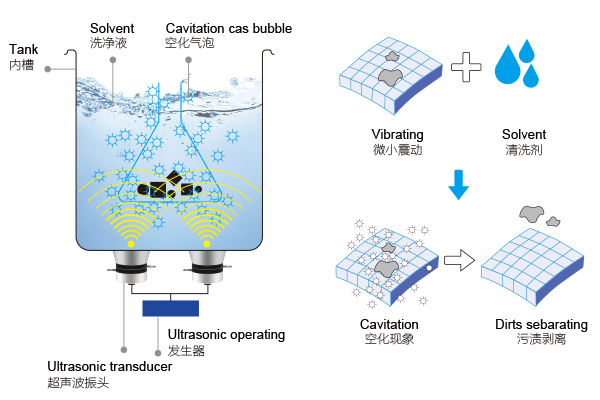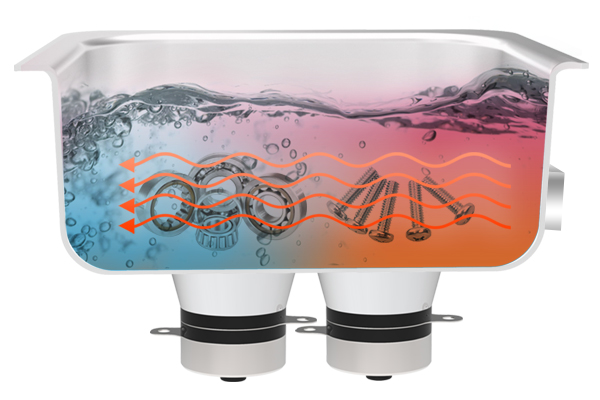Ultrasound is a sound wave with a frequency higher than 20,000 Hz, with strong directivity and penetration, easy to obtain more concentrated acoustic energy, which can be used for distance measurement, speed determination, cleaning, welding, stone crushing and sterilization in water. It has many uses in medicine, military, industry, and agriculture. The name of ultrasound is because its lower limit of frequency is similar to the upper limit of human hearing. The working principle of ultrasonic cleaning machine is mainly through conversion transmission, the power ultrasonic frequency source of acoustic energy into mechanical vibration, through the cleaning tank wall, the ultrasonic radiation into the tank cleaning agent. Through the radiation of ultrasound, so that the micro bubbles in the liquid tank under the action of sound waves to maintain vibration.

When the sound pressure or sound intensity by pressure reaches a certain level, the bubble will rapidly expand, and then suddenly closed. In this process, the bubble closure of the moment to generate shock waves, so that the bubble around the pressure of 1012-1013pa and the Bureau of temperature regulation, this ultrasonic cavitation generated by the huge pressure can destroy insoluble dirt and make them divided in solution, steam-type cavitation on the direct and repeated impact of dirt. On the one hand, destroy the adsorption of dirt and cleaning parts surface, on the other hand, can cause fatigue damage to the dirt layer and be barge away, gas-type bubble vibration to the solid surface scrubbing, dirt layer once there is a seam can be drilled, bubble immediately “drill” vibration so that the dirt layer off, due to cavitation, two liquids in the interface quickly dispersed and emulsified, when the solid particles are wrapped in oil and adhering to the surface of the cleaning parts, oil is emulsified, solid particles fall off on their own, ultrasound in the cleaning fluid propagation will produce positive and negative alternating acoustic pressure, the formation of jets, impact cleaning parts, while the non-linear effect will produce acoustic and micro-acoustic flow, and ultrasonic cavitation in the solid and liquid interface will produce high-speed micro-jets, all these effects, to destroy the dirt, remove or weaken the boundary layer of dirt, to increase the agitation, diffusion, and accelerate the can be used for cleaning. Increase the role of agitation, diffusion, accelerate the dissolution of soluble dirt, strengthen the cleaning effect of chemical cleaning agents. It can be seen that where the liquid can be immersed and the presence of the acoustic field has a cleaning effect, and its characteristics are suitable for the cleaning of parts with very complex surface shapes. In particular, the use of this technology can reduce the amount of chemical solvents, thereby greatly reducing environmental pollution.
The second ultrasonic wave in the liquid propagation, so that the liquid and cleaning tank in the ultrasonic frequency vibration together, the liquid and cleaning tank vibration has its own inherent frequency, this vibration frequency is the frequency of sound waves, so people hear the humming sound.
In addition, in the ultrasonic cleaning process, the naked eye can see the bubble is not a vacuum nucleus group bubble, but air bubbles, which inhibits the cavitation effect reduces cleaning efficiency. Only the air bubbles in the liquid is completely dragged away, the cavitation of the vacuum nucleus group bubble to achieve the best results.



